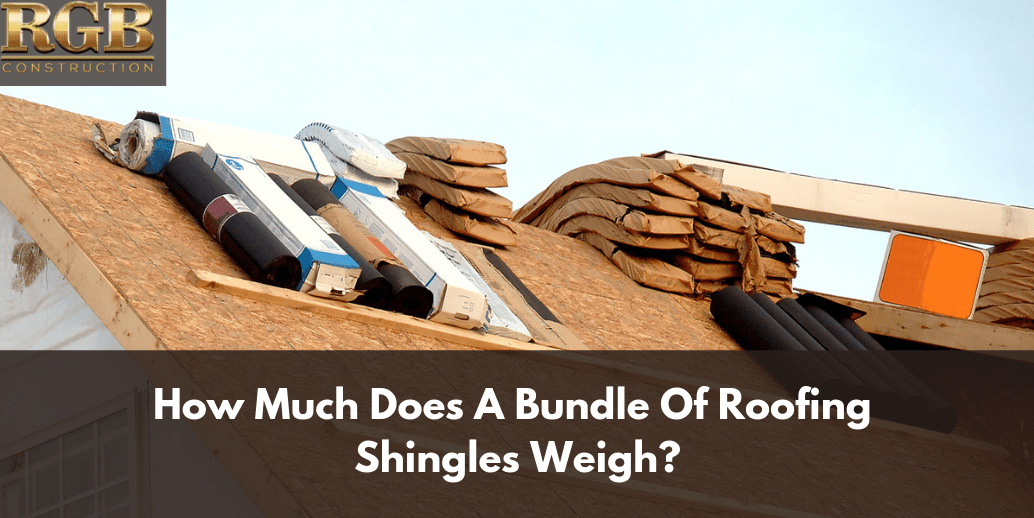You’ve probably always dismissed the weight of shingles as something that only your roofing contractor needs to be all that concerned with. After all, they give you the assessment and feasibility of a given material being used, and they’re the ones removing the old roof and putting the new one on. You’re not lifting anything, right?
Well, you may be surprised to realize that the weight of shingles does have ramifications for you in the fact that you have to do something with those old, discarded shingles. See, most contractors don’t provide disposal of these materials, which places the rental of a dumpster and the hauling away/disposal of the old materials firmly on your shoulders as the homeowner.
It’s easy to just think “I’ll overestimate by a likely wide margin and be done with it”. If you’re independently wealthy, then sure, that works fine, but for most people, budgets matter. If you overestimate by these deliberate margins, you’re throwing money out the window. Conversely, if you try to be accurate, but merely make an educated guess, you could badly undershoot, which causes all manner of logistical problems in the long run.
Let’s take a look at some roofing concepts that will help you to estimate the weight of these materials, so you can make an educated choice in handling this aspect of roof replacement without going bankrupt.
Understanding Roofing Square Of Shingles
In roofing terms, when it comes to shingles, this is the most basic unit with which they measure things. It’s not a square foot, but rather about 100 square feet. So, following that logic, a 1000 square foot roof is 10 roofing squares.
Now, this isn’t the unit shingles come in – no, that’d be too easy, wouldn’t it? Shingles come in bundles, which are about 1/3 of a roofing square. So, our theoretical 1000 square foot roof (that’s a pretty big house), which is 10 roofing squares, comes up to about 30 bundles of shingles.
Now, if that’s not enough math to confound you, try thickness/durability on for size, which can reduce this to a quarter of a square in some cases. Generally, the thicker and more durable the shingle, the less area it will cover.
Factors Affecting Shingle Weight
Several factors influence the weight of roofing shingles. Understanding these factors allows you to make informed decisions during your roofing project. Here are the key factors:
- Shingle Type: Different types of shingles have varying weights. For example, asphalt shingles are generally lighter compared to wood or slate shingles.
- Shingle Size: The size and dimensions of the shingles play a role in determining their weight. Larger shingles tend to be heavier than smaller ones.
- Material Thickness: The thickness of the shingle material affects its weight. Thicker shingles typically weigh more.
- Bundle Size: Shingles are often packaged in bundles for easy handling and transportation. The number of shingles in a bundle can vary, impacting the overall weight.
Hard(ish) Figures – How Much Is A Bundle Of Shingles
So, now that we understand that the coverage area of a bundle can fluctuate, we can give a general range of how much a bundle of shingles weighs. A single square can weigh between 150-240 pounds, with a single bundle being between 50-80 pounds. With this information, we can do a very simple calculation: [Bundle weight] x [bundles] x [number of layers] = our weight estimate.
Now, this won’t be a figure with NASA level precision, but it suffices, just fine, for calculating the general amount of roofing waste you need to store and dispose of. Always round up.
Average Weight of Common Shingle Types in South Jersey
To provide you with a better understanding, here are the average weight ranges for common types of roofing shingles in South Jersey:
- Asphalt Shingles: In South Jersey, a bundle of standard three-tab asphalt shingles usually weighs between 50 to 80 pounds (22 to 36 kilograms).
- Wood Shingles: Wood shingles are heavier compared to asphalt shingles. In South Jersey, a bundle of wood shingles typically weighs around 60 to 80 pounds (27 to 36 kilograms).
- Slate Shingles: Slate shingles are known for their durability and elegance but are considerably heavier. In South Jersey, a bundle of slate shingles can weigh anywhere between 800 to 1,500 pounds (363 to 680 kilograms).
- Metal Shingles: Metal shingles offer excellent longevity and are lightweight. On average, a bundle of metal shingles in South Jersey weighs around 40 to 70 pounds (18 to 32 kilograms).
Importance of Considering Shingle Weight in South Jersey
Considering the weight of roofing shingles is crucial for a successful roofing project in South Jersey. Here’s why it matters:
- Structural Considerations: Understanding shingle weight ensures that your roof’s structure can support the chosen shingle material without compromising its integrity.
- Transportation and Handling: Knowing the weight of shingle bundles allows you to estimate transportation costs and plan for appropriate handling equipment during installation.
- Material Estimation: Accurate estimation of shingle quantity based on weight helps minimize material waste and keeps project costs under control.
Conclusion
In conclusion, when planning your roofing project in South Jersey, having a solid grasp of the weight of roofing shingles is essential. Factors such as shingle type, size, thickness, and bundle size all contribute to the overall weight. By considering these factors
To learn more about roofing concepts and basic calculations for weight, cost and more, fill out our contact form or call us today!







